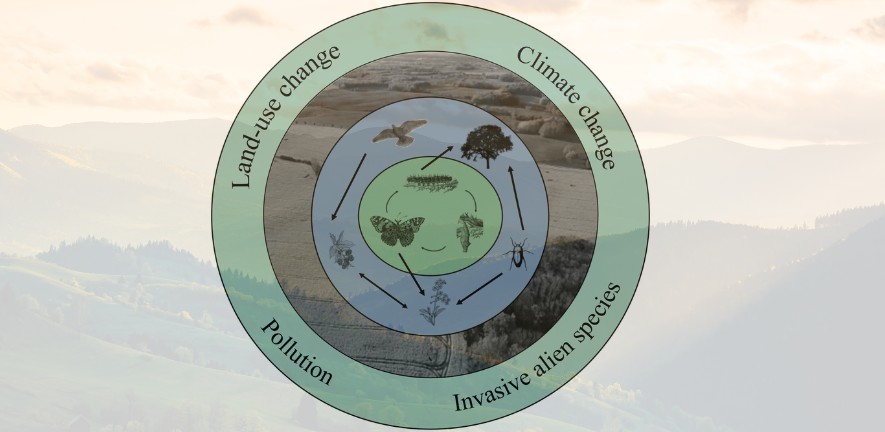
Submitted by Abigail Youngman on Fri, 04/04/2025 - 17:51
Insects are the dominant animal life-form on our planet and an essential part of our ecosystems.
Yet, despite reports of catastrophic insect declines and potentially imminent ‘insectageddon’, the global state of insect biodiversity remains unclear due in part to a massive lack of data.
A study published this week in the journal, Science, led by UKCEH and ZSL, whose authors include Dr Andrew Bladon, Dr Joe Millard and Prof Lynn Dicks, suggests a new approach that could potentially speed up the response to this global threat.
The report proposes a framework for monitoring populations and analysing the impact of threats to provide an overview of the state of the world's insect populations. It is hoped that this would lead to a better understanding of the large-scale actions needed to counter this threat to life on our planet.
Dr Rob Cooke, an ecological modeller at UKCEH and joint lead author of the study, explained: “We need to find out whether insect declines are widespread and what’s causing them. The challenge is like a giant jigsaw puzzle where there are thousands of missing pieces, but we do not have decades to wait to fill these gaps and then act.’
The Global Insect Threat-Response Synthesis (GLiTRS) project is part of a project funded by the Natural Environment Research Council (NERC), which is bringing together diverse sources of data including expert knowledge to assess the impact of individual threats.
Institutions involved in the project are UKCEH, the Natural History Museum, University College London, the Zoological Society of London, the University of Cambridge, Queen Mary University of London, the University of Stellenbosch, the University of Reading, the University of Exeter and Imperial College London.
Read the study: Cooke, R., Outhwaite, C. L., Bladon, A. J. , Millard, J., Rodger, J. G., Dong, Z., Dyer, E. E., Edney, S., Murphy, J. F., Dicks, L. V., Hui, C., Jones, J. I., Newbold, T., Purvis, A., Roy, H. E., Woodcock, B. A. and Isaac, N. J. (2025). Integrating multiple evidence streams to understand insect biodiversity change. Science. https://doi.org/10.1126/science.adq2110
Image: The complexity of insects in a changing world and the role of interactions. The centre ring shows an example insect life cycle, with curved arrows between life stages (here, larva, pupa, and adult). Connected to the life cycle are a simplified number of interacting species, including a variety of taxonomic groups. The middle ring represents the landscape in which this life cycle and the local interactions occur, often incorporating multiple habitat types and land uses. The outer ring shows some of the major drivers that act across the landscape and local scales, affecting the species found in those areas. These can act alone but can also interact.
